Can dental implants be used for the front teeth?
I’m losing my front teeth! How can I replace them?
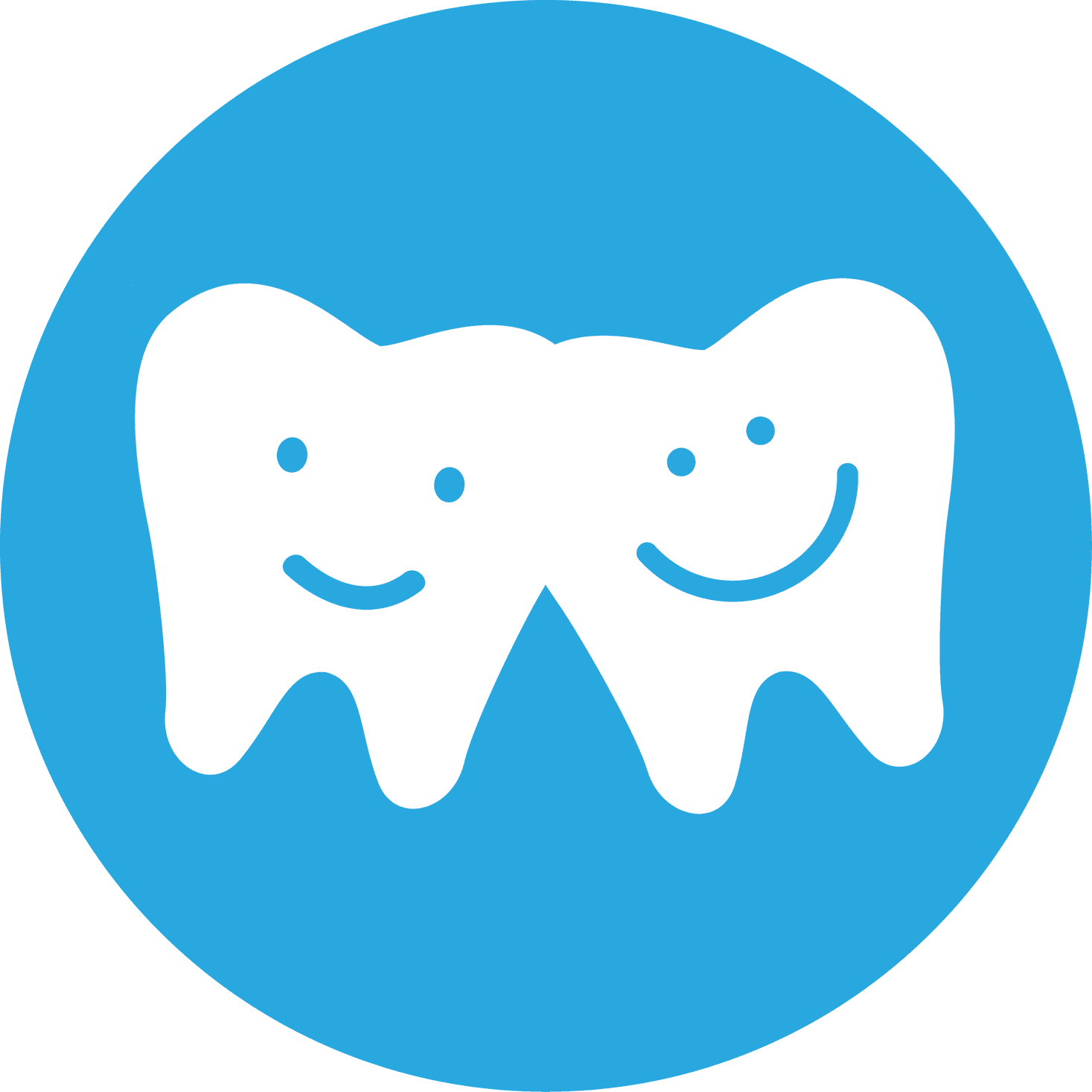
Written by NoFrills Dental
This dental article has been curated by the clinical team @ NoFrills Dental 🙂
October 20, 2021
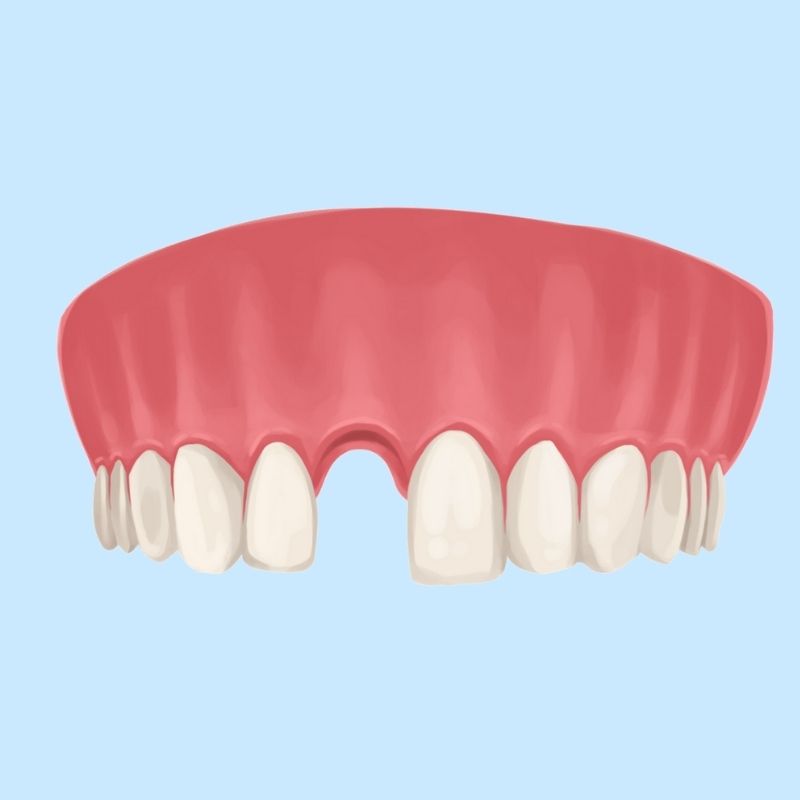
Imagine this: You have just gotten the news that your front tooth has to be extracted as it cannot be saved. Oh no! An imminent sense of worry and self-consciousness creeps into your mind.
“How will I face the public with this missing front tooth? What will people think of me?”
Fret not! Recent developments in technology have helped us develop more than one way to replace these missing teeth. Dental implants are one of the ingenious and most cosmetic ways to fill in these missing spaces. They are designed to resemble and function like the natural tooth.
In this article, we explain the advantages of the provision of implants for anterior teeth, assess suitability and why they are an advantage over conventional bridges and dentures.
Why should I choose a dental implant for my front tooth?
Dental implants are screws placed surgically into your jawbone, to support a dental prosthesis such as a crown, bridge, facial prosthesis or to act as an orthodontic anchor. It is an ideal option for patients with a good standard of oral health who have lost their teeth due to gum disease, traumatic injuries, failure of root canal treatment etc. In these cases, having a dental implant to replace a single front tooth is easily the most reliable, predictable and comfortable dental procedure with a success rate of 90-95%. It has become a treatment of choice for most dentists and is more reliable than dentures and conventional dental bridges.
Here are five reasons why dental implants are a better treatment option for your front teeth as compared to dentures and bridges:
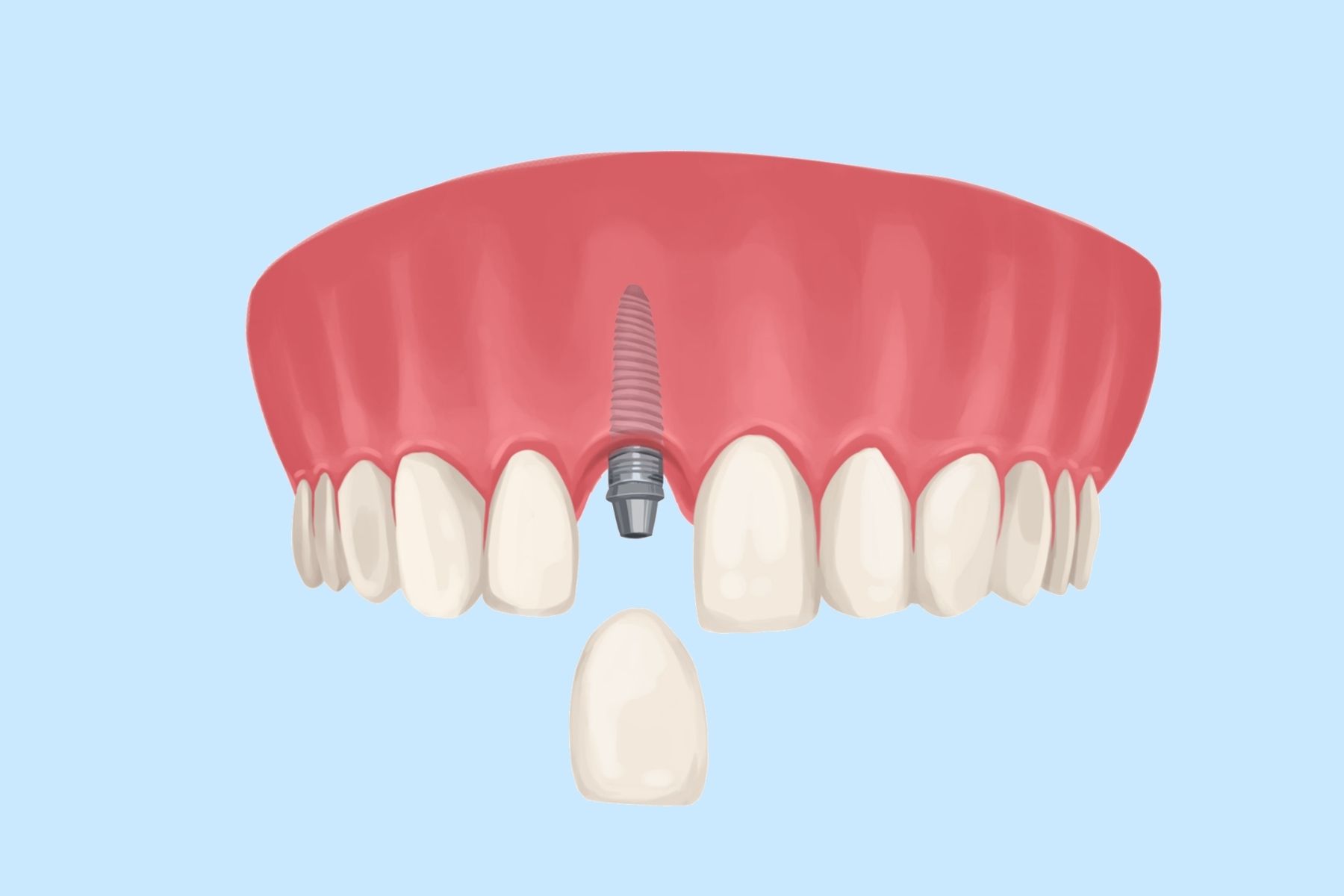
Dental implants act and feel closest to natural teeth
During the placement of a dental implant, the main aim is to achieve immediate close contact with your surrounding jawbone. Over the course of four to six months, your dental implant will osseointegrate with bone.
This means that the bone and implant are directly connected and anchored without any interposed soft tissue layers. Since they are fused to your bone and essentially act as a tooth root, implants not only look but also feel and function more like a natural tooth.
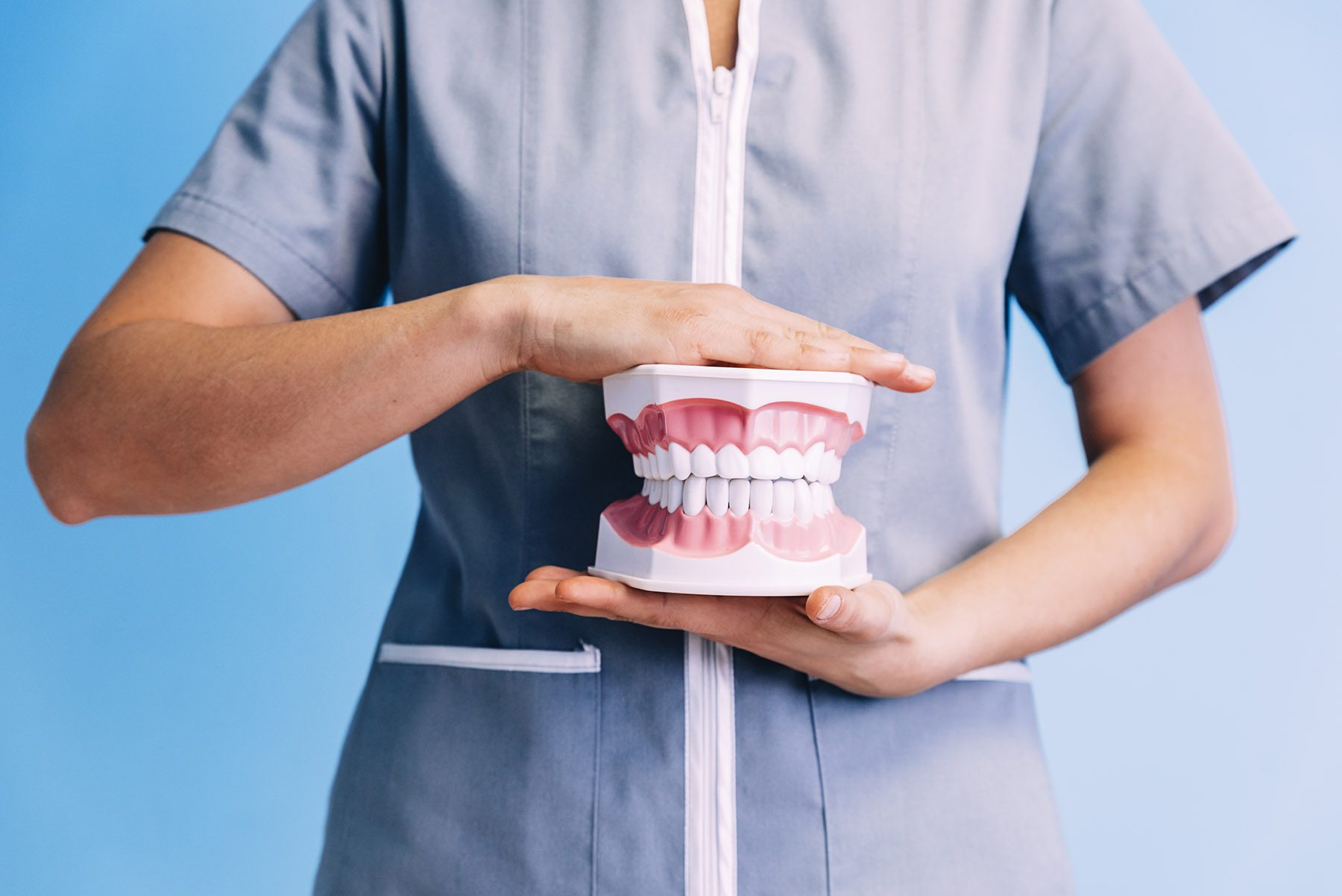
Dental Implants help maintain bone density and bone health of your jaw
Our gums recede and our jawbone shrinks with age. This can happen at a substantially faster rate at the site where the tooth is lost.
The titanium screws of the dental implant act like a natural tooth root and upon successful placement, cells will start to regenerate and subsequently lay down new bone just as it does when the natural tooth is in place.

Dental Implants are expected to last a lifetime
Dental implants are a permanent solution to tooth loss and they can last between 20-30 years if they are properly maintained and cared for.
The factors that affect the longevity of your dental implants are:
- Oral hygiene (how well you take care of your teeth),
- Injury of damage,
- Medical history,
- The position of the implant in your mouth (implant prosthesis on posterior teeth are more likely to have a shorter lifespan as they are constantly put under load from chewing and grinding).

Dental Implants are Easier to care for as Compared to Bridges and Dentures
Maintaining oral hygiene for your dental implant is a lot more straightforward as compared to a denture or a bridge.
There is no need to purchase special cleaning tablets, fancy water flossers, adhesives or superfloss.
All you need is your regular toothbrush, toothpaste and dental floss to keep it clean. Just look after them like how you normally clean your natural teeth.
In addition, dental implants are a standalone treatment modality as compared to conventional bridges. A dental bridge involves extensive preparation and drilling of the adjacent tooth to provide support for the bridge prosthesis. If not cared for properly, this enhances the risk of secondary tooth decay and other complications.
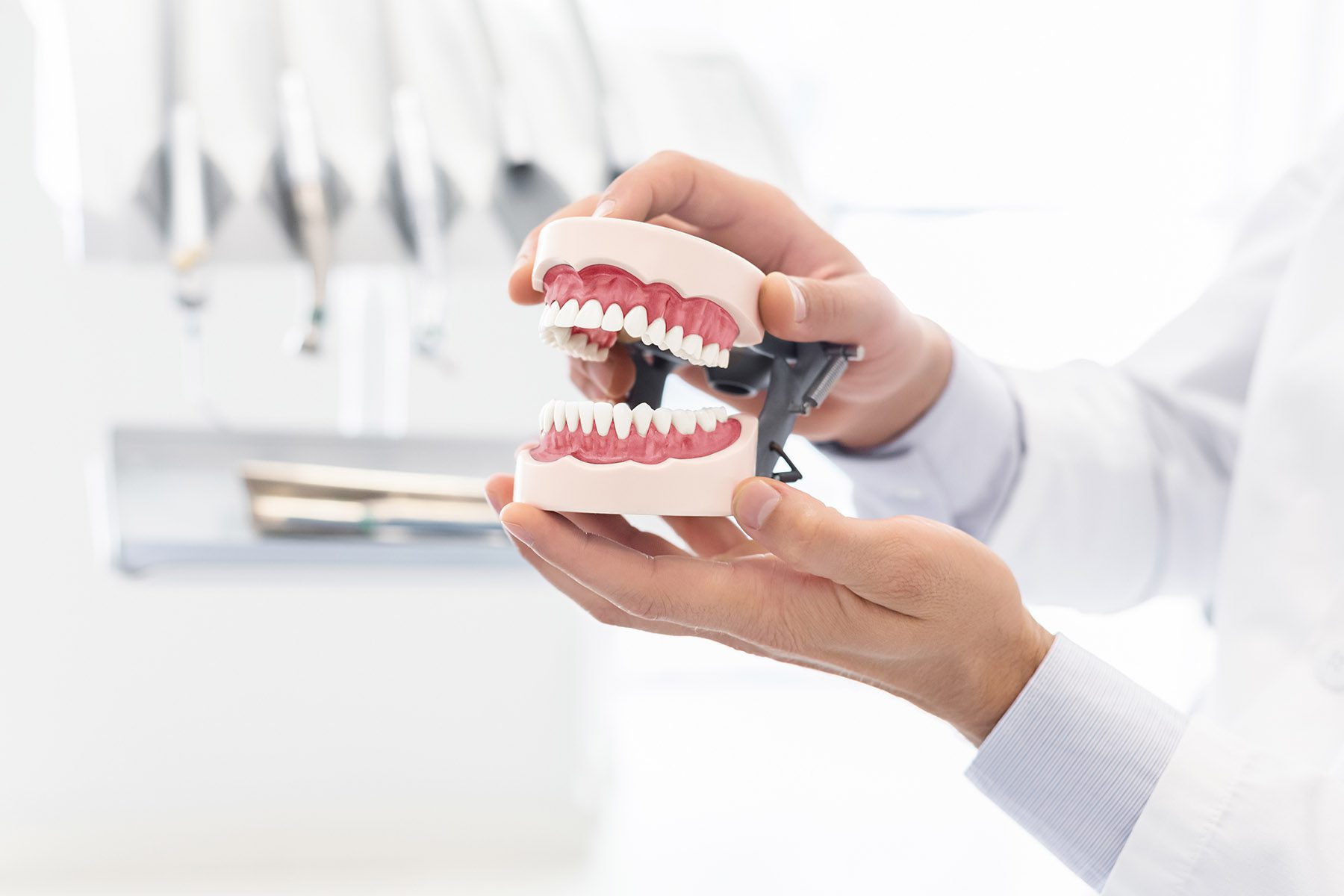
Dental Implants Restore your Biting Force
Since dental implants are osseointegrated into your jaw, they allow you to bite with the same force you use with your natural teeth. Other tooth replacement options such as bridges or dentures sit on top of your gums and jawbone hence do not restore as much bite force as compared to implants.

Who is suitable for a dental implant?
Front tooth implants are suitable for any adult patient above 18, as long as they have reached skeletal maturity. To be eligible for this treatment, patients must have adequate quality and quantity of bone. Bone density can be verified by taking a dental panoramic X-ray or CT scan. Inadequate bone density can lead to failure of implant placement. This problem can usually be overcome by bone grafting or a sinus lift.
If you want to find out more about bone grafting, read more here
Smokers and patients diagnosed with uncontrolled diabetes are also more prone to developing complications post implant placement. These groups of patients are more susceptible to getting periodontal (gum) disease which can cause peri-implantitis (inflammation of soft tissues around the dental implant).
If you fall in either one of these categories, please consult your dentist for further advice and recommendations on whether this treatment option is the best for you.
What is the procedure for an implant on the front tooth?
There are several steps required for the placement of a dental implant on the front tooth. The process is relatively straightforward and outlined below:

1. Consultation and Diagnosis
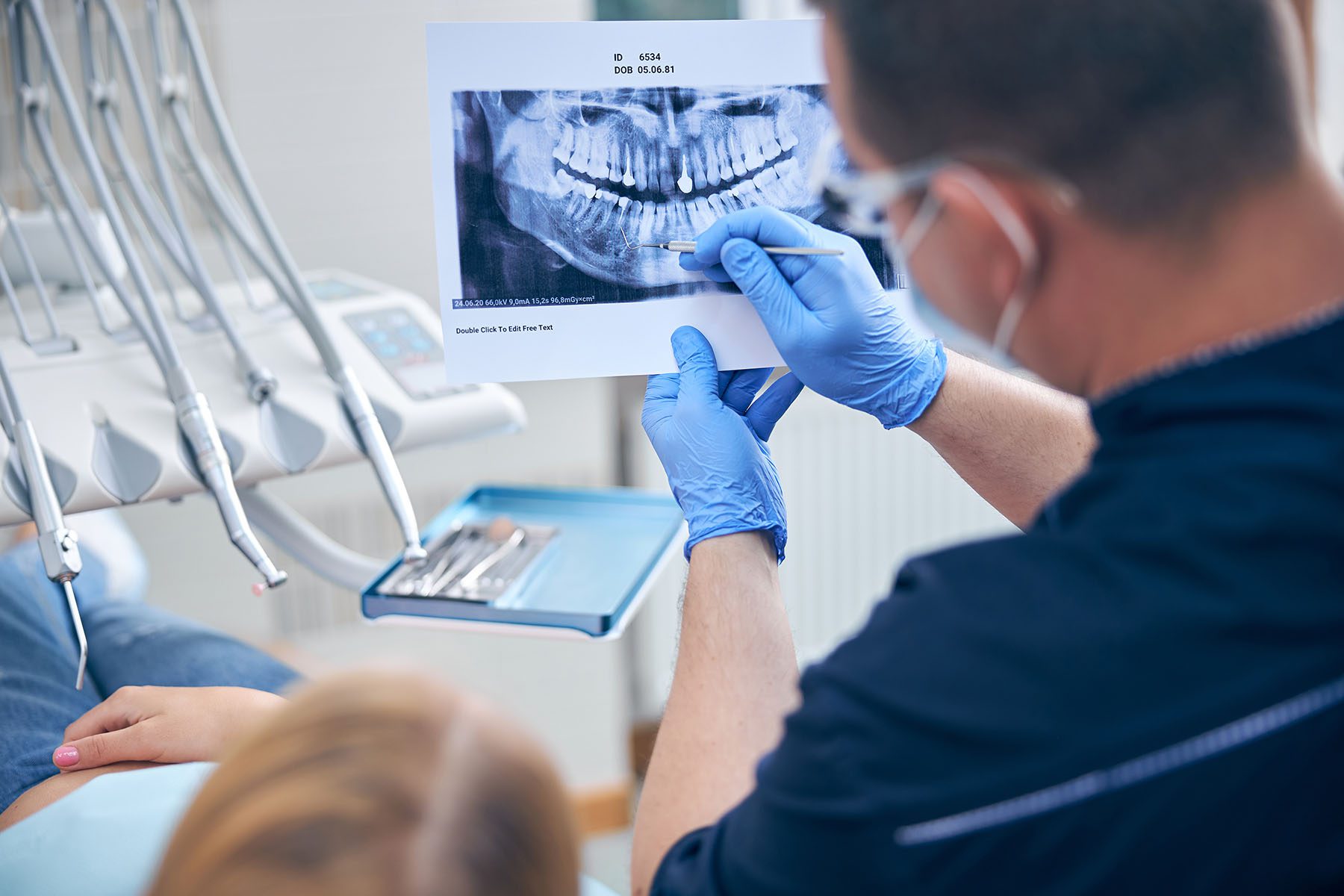
2. Implant surgery
Your dentist will incise a small flap in your gums and drill the implant into your jawbone. The implant screw and abutment are attached, gums are sutured up for it to heal. Don’t worry, you won’t be left toothless! A temporary crown or denture will be given to you to wear until the permanent prosthesis is ready to be fitted.
The site will be left alone to heal and for the implant to osseointegrate. This process takes around six months.

3. Placement of restoration
Good things come to those who wait – it is now time to construct and fit your final dental prosthesis! The custom-made dental crown or bridge is screwed into place and attached securely onto the implant abutment. You are now free to eat and smile with confidence.
Conclusion
Dental implants are a great way to restore and replace anterior teeth. The whole process may seem complicated and an arduous journey but trust in the process, it will give you a much better quality of life than before. A good oral care routine is essential in ensuring that your implant lasts decades and beyond, so make sure you heed your dentist’s advice on how to take care of them!

References
- Gbadebo, O., Lawal, F., Sulaiman, A. and Ajayi, D., 2014. Dental implant as an option for tooth replacement: The awareness of patients at a tertiary hospital in a developing country. Contemporary Clinical Dentistry, 5, p.302.
- Raikar, S., Talukdar, P., Kumari, S., Panda, S., Oommen, V. and Prasad, A., 2017. Factors affecting the survival rate of dental implants: A retrospective study. Journal of International Society of Preventive and Community Dentistry, 7, p.351.
- Smilesforlifeonline.com. 2016. How Dental Implants Prevent Bone Loss – Harrisonburg, VA. [online] Available at: https://www.smilesforlifeonline.com/blog/2016/05/25/how-dental-implants-prevent-bone-170551 [Accessed 8 October 2021].
- Family Dental Group. 2018. Factors That Affect the Longevity of Your Dental Implant. [online] Available at: https://www.familydentalsac.net/factors-that-affect-the-longevity-of-your-dental-implant [Accessed 8 October 2021].
- NoFrills Dental. n.d. The Comprehensive Guide to Dental Implants (2020). [online] Available at: https://www.nofrillsdental.com/2020/10/24/dental-implant-guide [Accessed 8 October 2021].
“
Looking to get started on your brand new & improved smile? Speak to our dentists today!
Our team of experienced dentists are fully dedicated to providing patients with high-quality and affordable dental care. Our dentists are well-versed in the cosmetic dentistry, and highly adept in producing highly aesthetic and long lasting results for all of our patients.
Schedule an appointment
We’ll get back to you within 24 hours.
Our Dental Clinics
We are conveniently located at these locations:
NoFrills Dental @ Suntec City
3 Temasek Boulevard
Suntec City (North Wing)
#03-317
Singapore 038983
NoFrills Dental @ Marina Square
6 Raffles Boulevard,
Marina Square,
#B1-11
Singapore 039594
Related Posts
Effective ways to clean your Invisalign Aligners
The advanced technology of Invisalign aligners has made them a hugely popular alternative to braces for straightening teeth, among teens and adults alike.
These clear plastic appliances are more comfortable and virtually unnoticeable in the mouth, and have the further advantage of removability for brushing and flossing and meals and snacks. And they can fix less complex orthodontic problems up to twice as fast as braces.
How to Clean Retainers: For Removable and Permanent Retainers
Retainers sit inside of your mouth and come into direct contact with your teeth. Bacteria, plaque and tartar can quickly accumulate inside of your retainers if they’re not cleaned properly and regularly. Just like your regular teeth, it’s important to clean your retainers everyday.
ClearCorrect vs Invisalign
In this article, we compare two popular clear aligner companies: Invisalign and ClearCorrect. They are two of the most renown in-office clear aligner companies that boast a strong track record of results. Both sets of aligners aim to straighten misaligned teeth and correct jaw discrepancies, however, the process to getting to an ideal end result (i.e., straight teeth and aligned jaws) varies slightly.



